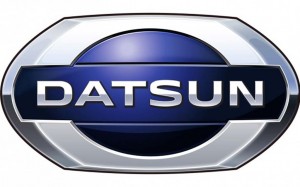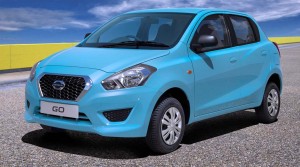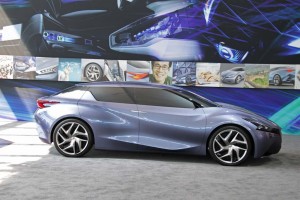After an absence of more than a quarter-century, Nissan’s reborn Datsun brand recently made its return in the booming Indian market with the launch of the little Go hatchback.
Datsun is returning to its roots as a simple and affordable car, in this case targeting emerging markets that will also include Russia, South Africa and Indonesia. Eventually, said the brand’s chief executive Vincent Cobee, Datsun will be sold in as many as 50 markets around the world, aiming at first-time buyers on a limited budget.
“It’s a reflection of their (limited) purchasing power,” explained one-time civil engineer Cobee who has been running the Datsun project since 2010. “A first-time buyer in the United States might be able to spend $20,000 on a new car. In India, that might be $7,000.”
Japan’s second-largest automaker is taking a very different approach to Datsun than it has with the Nissan and Infiniti brands. To maximize economies of scale with those higher-priced marques, the approach has been to come up with globalized products that can be sold in markets from Berlin to Boston to Beijing with just relatively modest changes – largely reflecting local safety, fuel economy and emissions standards.
With Datsun, the maker plans to follow what Cobee called a more “glocalized” strategy “defined by the culture” of each individual market.
While vehicles sold in India, Indonesia and Russia might share the same underlying V-platform – also used in established markets for the Nissan Micra – the “top hat,” or body, will be more attuned to each individual market. That may reflect unique cultural preferences, the French-born executive explained, as well as local government requirements.
Products developed for “each Datsun market,” he added, “will have more diversity than (those of) the Nissan brand.”
That approach could yield significant volume in the emerging world. Nissan forecasters estimated these markets could eventually generate from 15 million to 30 million sales annually – perhaps a third or more of total worldwide demand by 2025, according to some industry estimates. But a sizable share of those buyers simply won’t be able to afford more established brands like Nissan which currently holds just a 1% stake of the Indian market.
By going after lower-income customers, Cobee told TheDetroitBureau.com, Datsun hopes to “address” 8% of the Indian market.
In the mid-term, Datsun is looking at sales that could top 500,000, but Cobee stressed that the newly revived brand is not in a rush. “We need to get it right,” he emphasized. “That’s more important than doing it quickly.”
During the Nissan 360, a media background event in Orange County, California, over the last several weeks, Nissan has offered insight into its global strategy. That included a look at several possible future Datsun products, such as the Friend-ME concept revealed at the recent Shanghai Motor Show.
While the Chinese concept was badged a Nissan, the four-seater suggests that the maker doesn’t see Datsun as a basic econobox brand. The Friend-ME’s stylish exterior wraps a low-cost package that could give the maker an edge over more stodgy competitors, or so Datsun is hoping, according to Cobee.
The decision to re-launch Datsun – which dates its first product back to 1914 – in India was a matter of expediency, explained the brand chief. Parent Nissan already had significant presence in the market so that it could operate with a significant degree of autonomy.
Russia will soon follow, with Indonesia and South Africa completing the quartet of first markets Datsun has so far identified. Longer-term? “For sure, we will announce more,” promised Cobee, hinting that the ultimate count of markets for Datsun will be “North of 20 (but) short of 50.”



